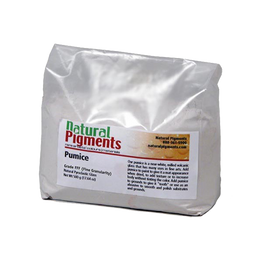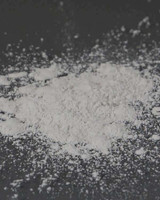Description
These prills of white beeswax derived from a natural source, bee apiaries in North America, that is naturally bleached to a soft, pleasing white color.Beeswax is used as a protective coating (varnish) in painting, as a paint binder, and as a stabilizer in oil colors. It is usually available in the form of cakes, pastilles or prills, either bleached white or in its natural yellowish color. It melts between 62-65° C. (144-149° F.) and will dissolve when heated in water, turpentine, mineral spirits, or oil. Beeswax does not oxidize and polymerize as does drying oil, but rather, solidifies as it cools to make an solid mass. It does not darken or change color with age, and it resists the action of atmospheric impurities more than do resins or oils. On the other hand, it is somewhat more sensitive to temperature changes, becoming soft in heat and brittle in cold. It is also more sensitive to abrasion and rubbing than a dried film of oil or varnish.White beeswax is the recommended choice for most painting techniques calling for wax ingredients. Beeswax cuts the glossy quality of oil paints, giving them a more satin finish while extending the drying time of paints, making them thicker and more workable for longer periods of time. When making your own oil colors you may add about 2% white beeswax when grinding colors. The wax helps to give the paint a more buttery consistency and guards against flocculation of the pigment.Beeswax is used in a painting technique called "encaustic." The technique itself is very simple. Pigment is added to molten beeswax and often resin (such as Venice turpentine or damar), which is then applied hot to the painting surface. The surface itself may be warmed allowing for manipulation of the encaustic paint. It may also be cool causing the brush stroke to immediately solidify. The final treatment is the "burning in" which consists of passing a heat source over the surface, fusing and bonding the painting.Origin and HistoryThe English term wax is derived from the Anglo-Saxon word weax for beeswax, so a practical definition of a wax may therefore be a substance similar in composition and physical properties to beeswax. Technologists use the term for a variety of commercial products of mineral, marine, plant and insect origin that contain fatty materials of various kinds.Beeswax is the oldest known pigment binder. Since ancient Greece, beeswax was first used in painting by heating it over a charcoal pot, hence the term encaustic, literally meaning burning in. The Egyptians, Greeks, and Romans would melt a mixture of beeswax and often resin over this heat-source, blending the ingredients together. Once the wax melted pigments were introduced into the mixture. The wax color was then painted onto a wooden support using natural hair brushes or heated metal tools.SourceGlands under the abdomen of bees secrete a wax, which they use to construct honeycombs. Beeswax in the honeycomb form is familiar to everyone. When the honey is extracted, a crude yellow wax remains that can be melted and filtered. It contains a high proportion of wax esters (35 to 80%). The hydrocarbon content is highly variable, and may be altered somewhat as beekeepers may feed some to bees to improve the yield of honey. This crude wax is a yellowish-brown solid; somewhat brittle when cold, but becoming plastic by the heat of the hand. It has an agreeable, honey-like odor. The color varies depending upon the impurities collected with the wax during its harvest.The color of yellow wax is bleached by exposing it, with an extended surface, to the combined influence of air, light and moisture. When yellow beeswax is melted, formed into thin sheets, and exposed to sunlight and air, it becomes white. In a few days the sheets are partially bleached; but, to deprive the wax completely of color, it is often necessary to repeat the whole process. When sufficiently white, it is melted and cast into cakes. Yellow wax may also be decolorized by treatment with charcoal or with potassium permanganate, potassium dichromate and sulfuric acid, and hydrogen peroxide. The bleaching process raises the melting point of the wax. Because it is bleached, white beeswax is the recommended choice for most painting techniques calling for wax ingredients. White beeswax is less unctuous to the touch than yellow; it is soft and ductile at 35° C. (95° F.) and fusible at 65°C. (149° F.), retaining its fluidity at a lower temperature.











